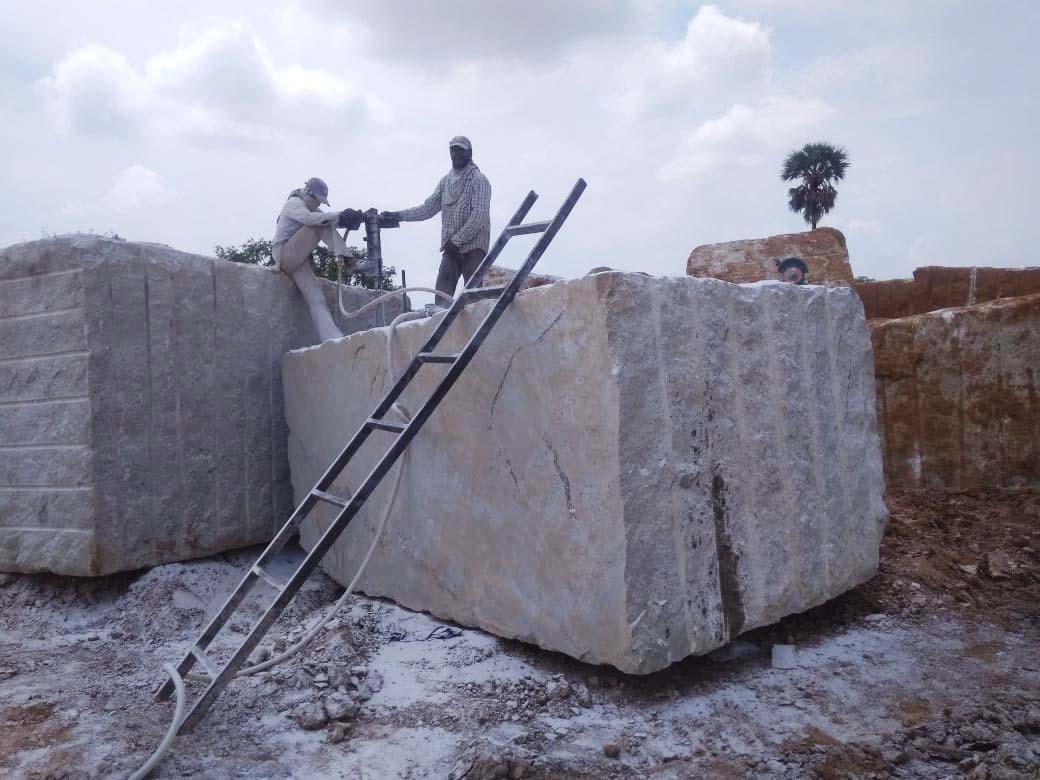Checking Out Granite Quarries in South Africa Industry: From Quarry to Masterpiece
Unearthing the Rich Background and Sustainable Practices of Granite Quarrying
As we depend on the precipice of revealing the intricate tapestry of granite quarrying, a journey through time reveals not just the physical act of removing rock however likewise the social and historic importance woven right into the really fabric of this method. From the ancient origins that laid the structure for modern quarrying techniques to the sustainable techniques that are shaping the future of this industry, each carve mark on granite surface areas tells a tale waiting to be uncovered (granite quarries in south africa). The legacy of granite quarrying stretches much beyond simple removal; it is a testimony to human resourcefulness, strength, and the long-lasting appeal of this magnificent stone
Ancient Origins of Granite Quarrying
Going back to old people, the technique of quarrying granite has actually been an essential part of human history and architectural development. The earliest evidence of granite quarrying days back to old Egypt, where enormous pyramids and intricate sculptures were crafted from this durable stone. The Egyptians utilized primitive devices to extract granite blocks from quarries, showcasing the importance of this product in their monumental buildings.
Moving ahead in history, the Greeks likewise made significant contributions to the quarrying of granite. The Greeks utilized granite in different architectural marvels, such as holy places and statuaries, showing their skill in shaping and sculpting this durable stone. The Romans even more improved the strategies of quarrying granite, utilizing innovative tools like chisels and hammers to essence and shape granite for their legendary frameworks.
Through the centuries, the technique of quarrying granite has actually developed, with modern-day technologies improving performance while preserving the classic appeal of this all-natural stone - granite quarries in south africa. From ancient civilizations to modern contractors, the legacy of granite quarrying remains to shape our globe
Evolution of Quarrying Techniques
The evolution of quarrying strategies has been noted by a continual progression towards higher performance and accuracy in removing granite. From the primary techniques used by our ancestors to the innovative modern technologies made use of in modern quarrying operations, the market has undertaken significant improvements. Early quarrying techniques involved manual labor with standard tools such as blades, hammers, and wedges to remove granite blocks from the earth. As civilizations advanced, techniques like fire-setting and primitive explosives were introduced to facilitate the extraction process.
Advancements in computer-controlled equipment and 3D modeling have optimized quarrying operations, leading to very little environmental effect and enhanced sustainability practices. As the demand for granite continues to increase, the development of quarrying strategies stays important to meeting sector requires effectively and sustainably.
Cultural Importance of Granite
Granite holds a profound social significance across numerous human beings as a result of its enduring visibility in architectural work of arts and prized monoliths. From the impressive pyramids of Egypt to the detailed carvings of the Angkor Wat holy place in Cambodia, granite has actually been a product of option for expressing majesty and long life in cultural heritage. In ancient Rome, granite columns embellished temples and public buildings, signifying stamina and durability. The social importance of granite expands beyond its physical features; it symbolizes resilience, security, and timelessness, making it an icon of withstanding legacies and practices.

Sustainable Practices in Quarrying
Amidst the abundant background of granite quarrying and its cultural value lies a growing focus on sustainable practices within the industry. As ecological understanding and issues about source exhaustion have increased internationally, the quarrying market has increasingly accepted lasting methods to minimize its effect on the atmosphere and bordering neighborhoods.

Additionally, improvement and rehab of quarry sites post-extraction are essential to sustainable methods. By recovering quarried locations to an all-natural or valuable state, such as developing wild animals environments or leisure rooms, quarriers can balance out the environmental footprint of their operations and add favorably to the regional ecological community.
Heritage of Granite Quarrying
With a historic backdrop steeped in workmanship and commercial development, what withstanding effect has granite quarrying left on the landscape of modern society? The heritage of granite quarrying goes beyond simple removal practices; it has formed building marvels, urban landscapes, and social heritage worldwide. The durable nature of granite has actually made it a Get More Info favored option for monuments, structures, and facilities, standing as a testament to the skill and creativity of quarry workers throughout generations.
Furthermore, the financial footprint of granite quarrying can not be neglected. The industry proceeds to supply job opportunity and drive regional economic climates in regions where granite extraction prevails. It has also stimulated technological advancements in quarrying methods and devices, leading to a lot more efficient and lasting practices.
In terms of sustainability, the heritage of granite quarrying includes efforts to alleviate environmental impacts with recovery jobs and liable resource management. By stabilizing financial passions with environmental stewardship, the sector strives to guarantee that future generations can proceed to profit from this long-lasting natural resource.
Final Thought
